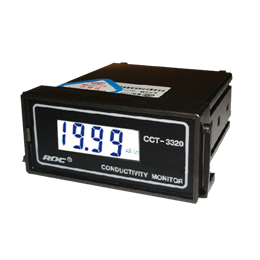

How does the conductivity meter works? The measurement principle of conductivity is actually to measure the resistance of the solution part between parallel electrodes according to Ohm's law. However, when current is passed through the electrode, an oxidation or reduction reaction occurs, which changes the composition of the solution near the electrode, creating a "polarization" phenomenon that causes serious errors in conductance measurements. For this reason, the above-mentioned polarization phenomenon can be reduced or eliminated by the high-frequency alternating current measurement method, because oxidation and reduction on the electrode surface alternate rapidly, and as a result, it can be considered that no oxidation or reduction occurs.
The conductivity meter consists of a conductivity electrode and an electrometer (electronic unit). The electric meter adopts the method of AC signal of appropriate frequency, and converts the signal into conductivity after amplifying the signal. The electric meter may also be equipped with a temperature measurement system that matches the sensor, a temperature compensation system that can compensate to the standard temperature and conductivity, a temperature coefficient adjustment system, a conductivity cell constant adjustment system, and an automatic shift function. Conductivity electrodes are sometimes also equipped with thermal elements.
The conductivity meter is a multi-range instrument that can meet the testing requirements of a variety of applications from deionized water to seawater. The conductivity meter can automatically compensate for temperature, so it can be used to measure liquid samples with different temperature coefficients than water. It is widely used in many industries.
At present, there are few manufacturers producing conductivity controller, Chimay is one of them.
